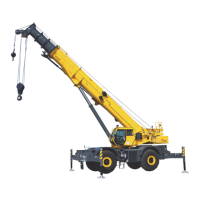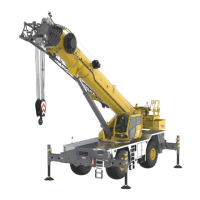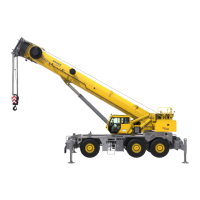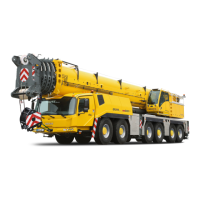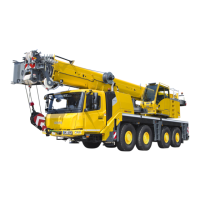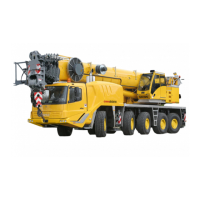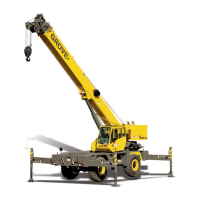4-51
Published 10/19/2017, Control # 618-00
GRT880 SERVICE MANUAL BOOM
BOOM FUNCTIONAL CHECK
1. Activate the hydraulic system and check for proper
operation and any leaks.
2. Ensure the boom will extend and retract properly.
3. Ensure the lift cylinder will not allow the boom to drift
down until the operator lowers it.
4. Ensure all electrical components disconnected during
removal are operating properly.
BOOM INSPECTION
Visually inspect telescoping sections for adequate lubrication
of all wear surfaces. Observe extended sections for
evidence of cracks, warping, or other damage. Periodically
check security of boom wear pads. Check boom nose
sheaves for security and freedom of movement.
Should boom chatter or rubbing noises in the boom occur, it
will be necessary to lubricate the telescope cylinder wear
pads. Refer to Maintenance and Lubrication, page 9-1.
BOOM ALIGNMENT AND SERVICING
Refer to Maintenance and Lubrication, page 9-1 for the
proper lubricant.
Boom alignment is achieved as the boom sections are being
assembled into one another. A check of fine adjustment is as
follows.
1. Fully extend the boom horizontally.
2. Lubricate the boom bottom channels and top corners.
3. Adjust the front top wear pad adjusting bolts (132, 244,
348) such that wear pads (104 and 105, 204 and 205,
306 and 307) are just touching or are no more than
2 mm (0.078 in) away from contacting the next inner tele
section. Tighten the jam nuts (138, 249, 353).
4. Retract and extend the boom; check for the high point
where the boom has brushed the wear pads at the
widest point.
5. Retract the boom tele sections to align the high point on
the boom tele section with the adjacent wear pads.
6. Add or subtract shims as necessary.
7. Attach a weight and extend the boom full length. Check
for side deflection.
Example: If the boom deflects to the left, the top left wear pad
would have shims added and the top right wear pad would
have shims removed.
BOOM EXTENSION AND RETRACTION
CABLES
Maintenance
NOTE: For more detailed information concerning
maintenance of the extension and retraction
cables, refer to Wire Rope, page 1-29
Inspection
The following information is taken from a National
Consensus standard as referenced by Federal Government
Agencies.
All wire rope will eventually deteriorate to a point where it is
no longer usable. Wire rope shall be taken out of service
when any of the following conditions exist.
1. In running ropes, six randomly distributed broken wires
in one lay or three broken wires in one strand in one lay.
2. Kinking, crushing, bird caging, or any other damage
resulting in distortion of the rope structure.
3. Evidence of any heat damage from any cause.
4. Reductions from nominal diameter of more than 5%.
5. In standing ropes, more than two broken wires in one lay
in sections beyond end connections or more than one
broken wire at an end connection.
Cable Tensioning Check and Adjustment
After reassembling the boom or when interior proportioning
cables appear loose, cable tensioning is required.
At near fully extended boom length, during sudden extension
after retracting the boom some distance, and with high
telescoping speeds, the extension cables may slap the
inside of the boom section. This will make a somewhat
audible noise, however this will not cause any damage and is
CAUTION
When extending and retracting the boom during
alignment, movement should be stopped if a restriction is
encountered, and wear pads adjusted as necessary to
provide free travel of the affected boom tele section(s).
CAUTION
Wear gloves when handling wire rope. Moderate to minor
injury may result if using bare hands.
CAUTION
When tightening/loosening the cables, secure cable using
the flats at the front of the cable ends to prevent cable
twist. Do not use an impact wrench. Do not turn cable.
Turning the cable while adjusting will result in damage or
failure of the cable.
Reference Only

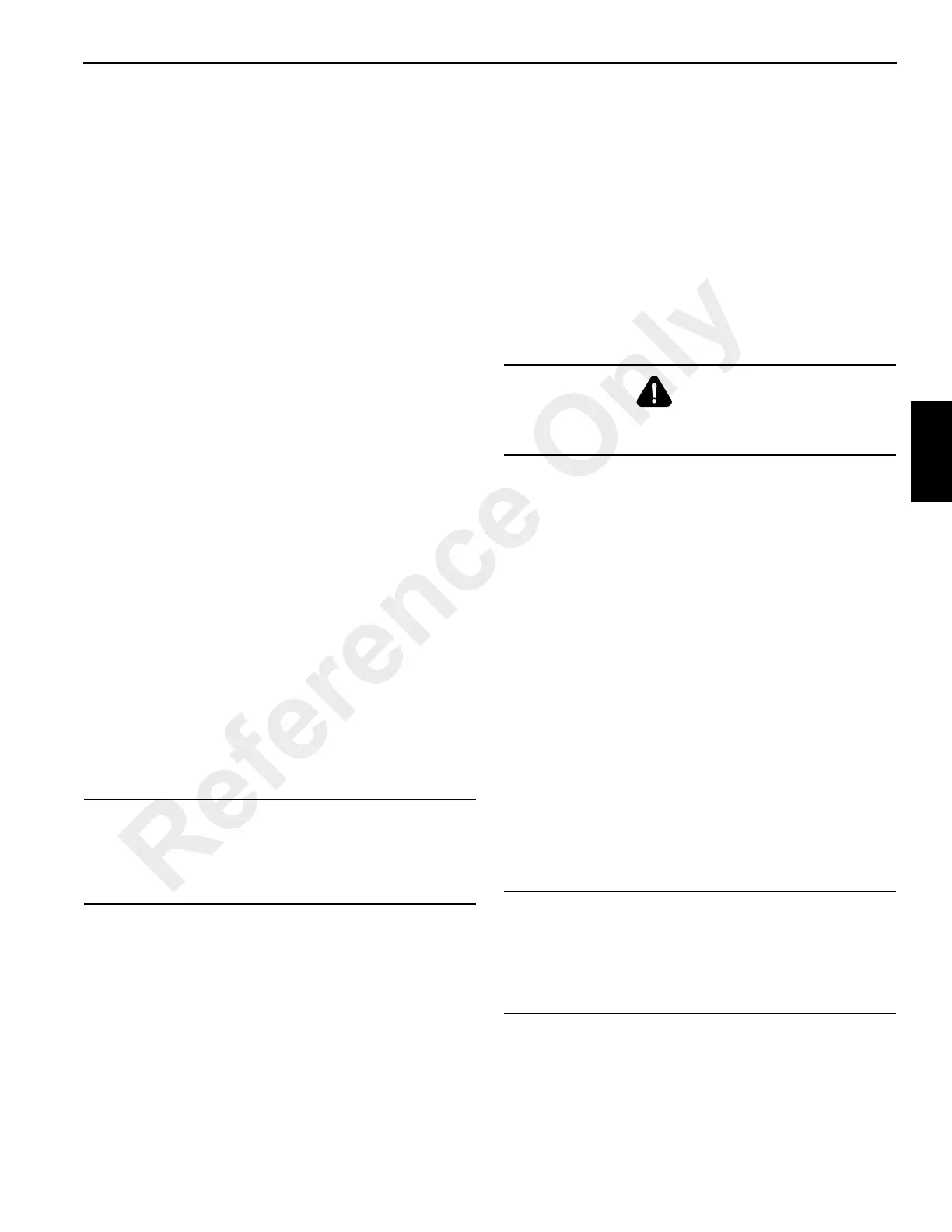